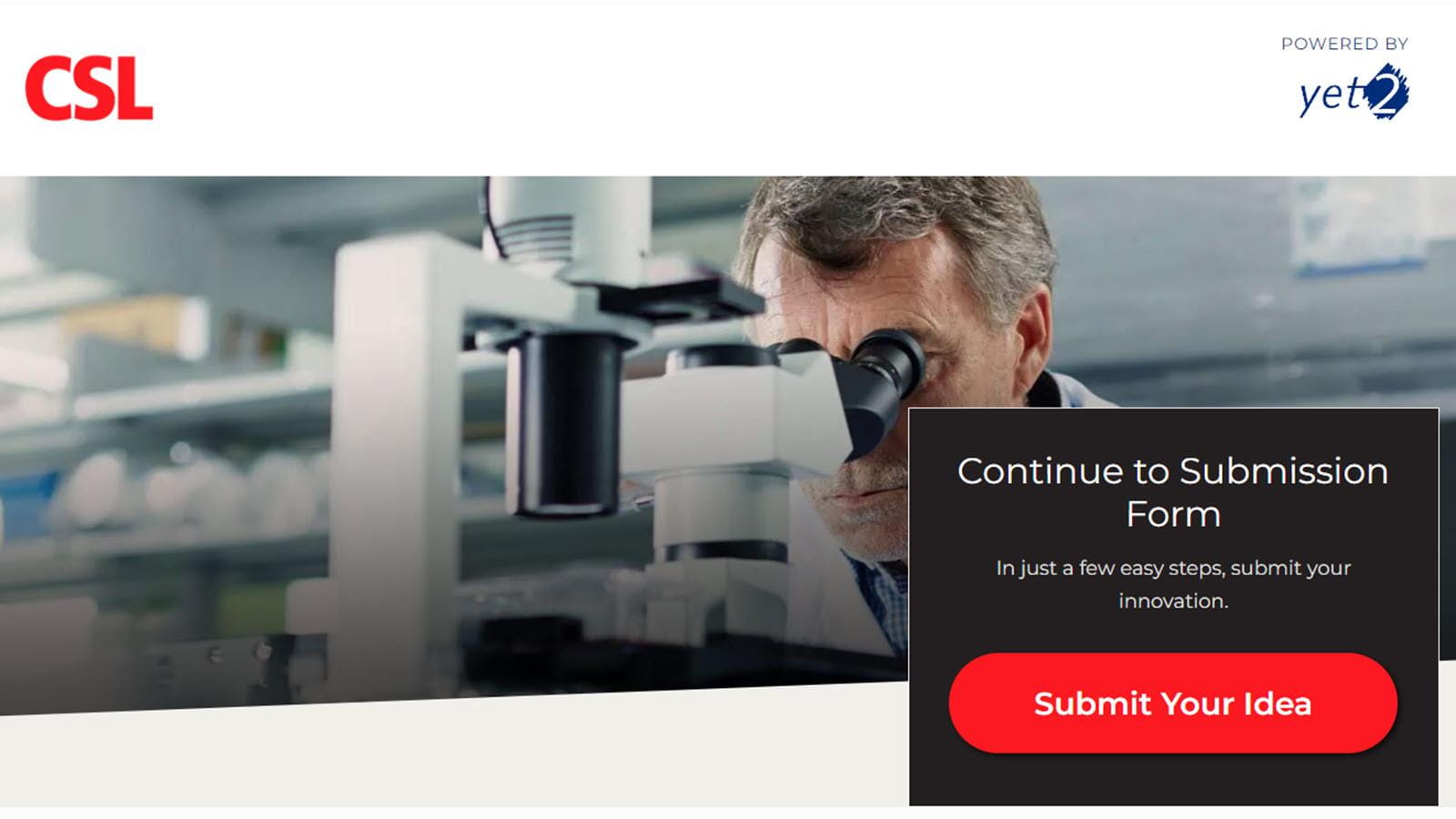Acknowledging that some of the best ideas to advance human health will come from outside its walls, CSL is making it easier for external researchers to collaborate and connect with the company through an open innovation submission portal.
“We’re solving for a common barrier to innovation,” said Nathan Brinkman, Director of Breakthrough Launchpad at CSL.
Gone are the days of biotech’s brightest looking to fast-track their ideas by scrolling company directories only to run into roadblocks with getting connected, Brinkman said. With the portal, researchers can submit a concept and there is a chance CSL will soon be in touch.
“The portal facilitates a connection with the right person within CSL so you can spend more time focused on what you do best,” Brinkman said.
Focus areas for submissions are broad-reaching and span not just CSL’s therapeutic areas of immunology, hematology, respiratory, cardiovascular and metabolic, transplant and vaccines. CSL is also seeking submissions relevant to strategic scientific platforms and technology, including cell and gene therapy, information technology and process improvement, especially in the plasma donation space. Submissions are welcome on topics outside of these, as well, if a researcher believes it would be of interest to CSL, a global biotech of 32,000 employees.
CSL includes CSL Behring, which makes medicines for rare and serious diseases; CSL Plasma, which collects donated plasma for plasma-based medicines; CSL Seqirus, which develops and manufactures vaccines; and CSL Vifor, acquired in 2022 and specializing in iron deficiency and nephrology (kidney care.)
There is a sea of potential for mutually beneficial arrangements that could arise out of a successful submission, said Doug Lee, Senior Vice President of Plasma Product Development at CSL. This includes research collaborations, traditional licensing, joint ventures, strategic investments or other suitable structures that most effectively leverage CSL’s combined capabilities.
“Partnering to pair your unique technologies, assets or equipment with our strengths in research, clinical development, manufacturing and commercialization will help us reliably deliver to our patients the next and future generations of biological therapies,” Lee said.



